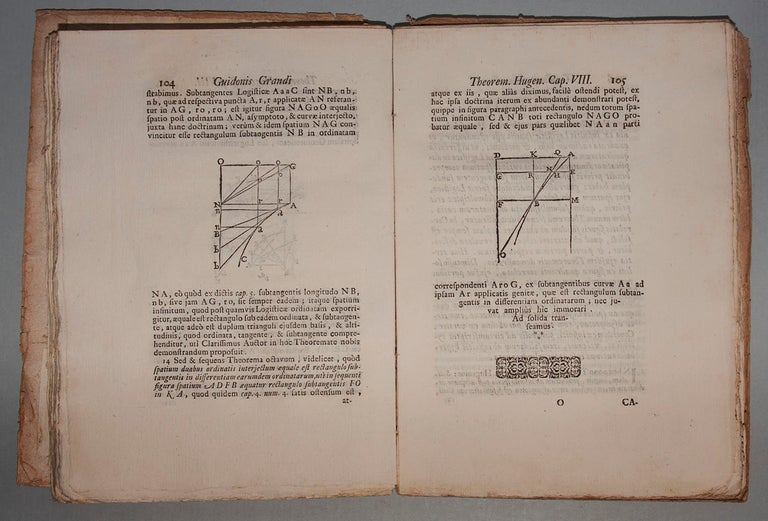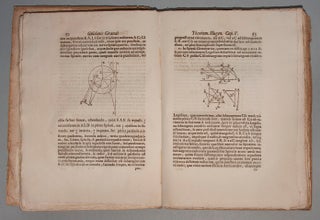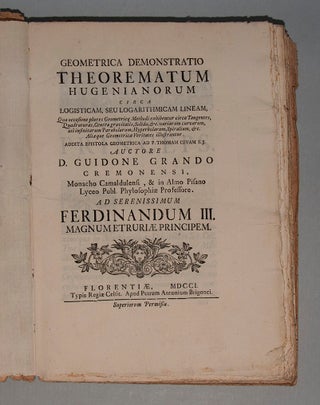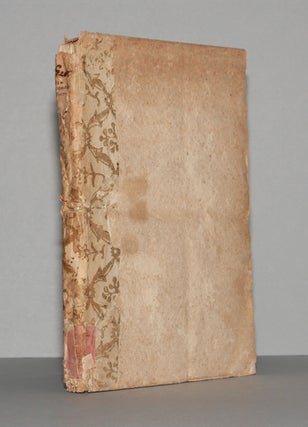Geometrica demostratio theorematum Hugenianorum circa logisticam, seu logarithmicam lineam.
Large 4to. [26.5 x 19.5 cm], (8) ff., 216 pp., with numerous woodcut diagrams in text. Bound in contemporary cartonnage and patterned papers, title label written in ink on spine, head and tail chipped. Untrimmed immaculate copy.
First edition of Grandi’s demonstration of Huygen’s logarithmic curve. Huygens had first enunciated theorems concerning the logarithmic or logistic curve (y = b ln(x/a) or x = aey/b) in a communication read before the Paris Academy in 1669; Grandi here demonstrates them in print for the first time. Torricelli had done preliminary studies of logarithmic curves as early as 1647, but Huygens, in his communication, revealed its most important properties.
The Geometrica, contains considerable discussion of the logarithmic spiral. “In a letter to Ceva, printed at the end of the volume, the gauche spiral cutting the generators of a right circular cone under a constant angle was studied for the first time, and it was shown, by purely geometric methods, that this spiral may be projected into a logarithmic spiral” (Archibald). The work was reprinted in Huygens’ Opera Reliqua (1728).
Born in Cremona and admitted to the Camaldolese order, Grandi (1671-1742) became a teacher of mathematics for the order. He was called to Rome in 1700, but Cosimo de’ Medici enticed him to stay in Tuscany by offering him a professorship at Pisa. In 1703 Grandi introduced Leibnizian calculus into Italy with the publication of his Quadratura circuli et hyperbolae. In 1728 he published his complete theory in Flores geometrica, an attempt (among other things) to define geometrically the curves that have the shapes of flowers, particularly multi-petalled roses. A member of the Royal Society and a devotee of Newton (who evidently owned a copy of the Geometrica), Grandi also performed successful work in theoretical and practical mechanics; his studies in hydraulics evoked considerable interest from the governments of central Italy.
* Riccardi I 618 2 (“rara e pregiata memoria”); Cantor III, pp. 365-9; DSB V.498; R. C. Archibald, ‘Notes On The Logarithmic Spiral, Golden Section And The Fibonacci Series’ in Jay Hambidge, Dynamic Symmetry, (Yale, 1920), note V. [www.spirasolaris.ca/hambidge1a.html]
Price: $4,500.00





